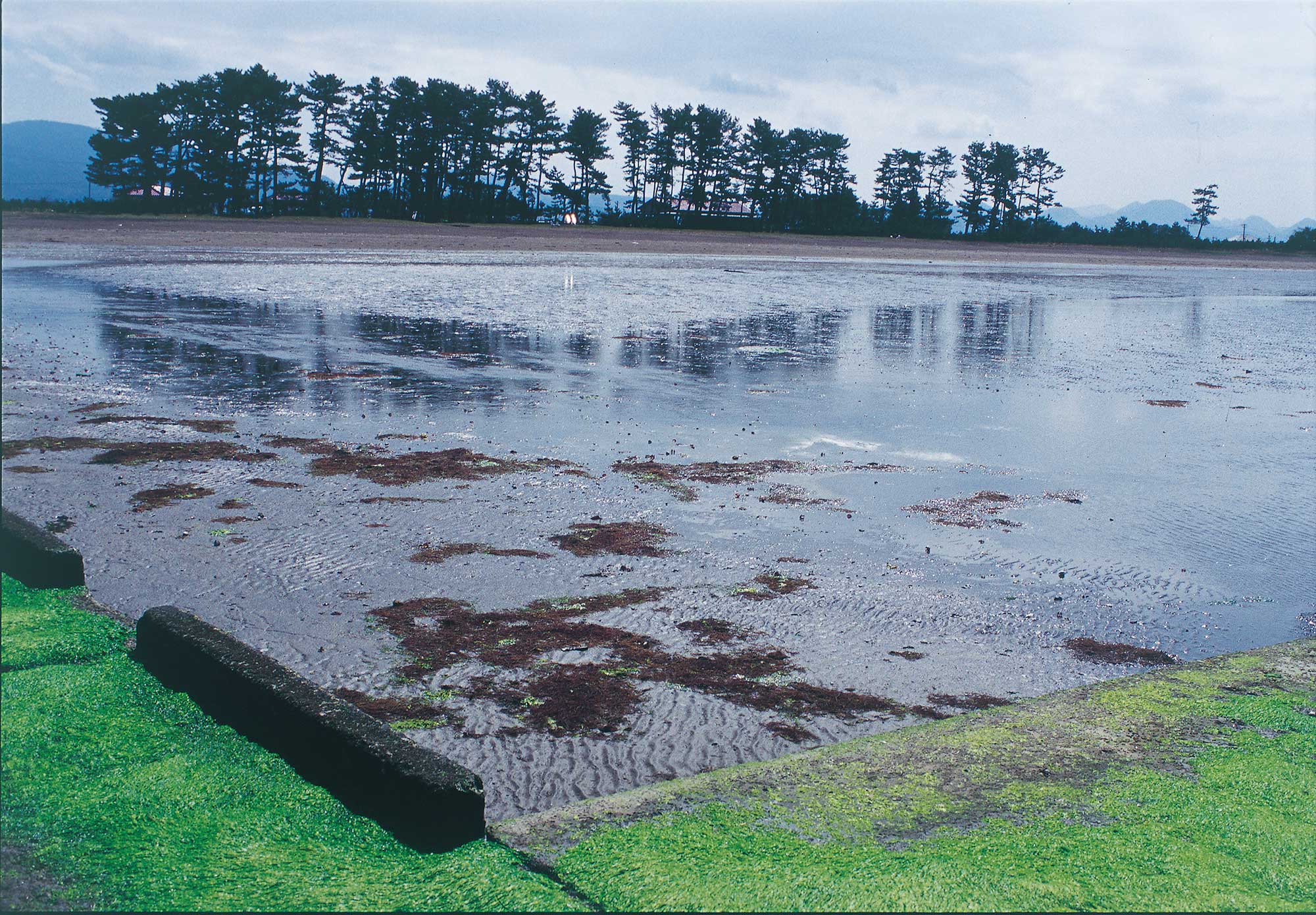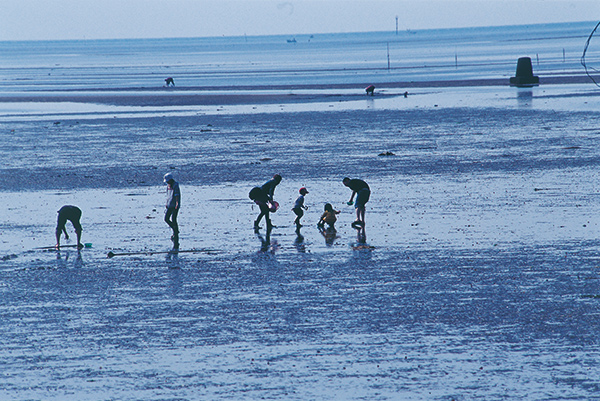

- Kenhoku Area
- Nature
Tidal Flats of Wama Coast
Photography/ISHIMATSU Takeo
Deep Ties to Usa Jingu Shrine
The sandy shallow beaches on the coastline from Nakatsu in the north part of the prefecture facing Suounada to Usa and Bungotakada stand in stark contrast to the rias coastline of the Bungo Channel in the southern part of the prefecture. Representative of these shoals is Wama Coast, where you can see a large tidal flat.
The area of Wama Coast is to the east of Nagasu, west of the estuary of Yorimo River, which enters the sea in the eastern part of Usa, and has been known as Wama-no-Hama Beach since antiquity. In the Records of Munataka Shrine, it appears to be written that 48 ships were built in Wamahama of Usa when Empress Jingu made her foray into Korea, and in Records of Hachiman, it says that a Buddhist ritual of releasing captive animals known as Life Release was held on the Matsuzaki beach at Wama-no-Hama in the Usa district.
Both Empress Jingu and Life Release show this coast’s deep ties to Usa Jingu Shrine since ancient times. This traditional Life Release is held in October at Wama Shrine next to Ukidono Bridge, a ceremony said to appease the spirit of prisoners suppressed by Usa Jingu Shrine long ago.
Pine forests line the coast as a windbreak, creating the “white sand, green pine” landscape typical of the Japanese coast. Currently Wama Beach Park has been established, where visitors can enjoy clamming in the tidal flats. After playing on the beach, the shade of the green pine trees will provide a pleasant place to rest.
Incidentally, a rich countryside of cultivated fields lies behind the coast. Here, you can see the famous regions of Kyubei Shinden, Iwaho Shinden, and even further back the north and south Tsuruta Shinden. You can also see other place names with “Shinden” (“New Field”) nearby, including Mikoyama, Gunchu, Takasago, Junpu, and Hamatake to the west of the Yakkan River.
This is because these areas were developed as new fields by damming the shoals with an embankment in the late modern period. The leader of this development was Daishirou Shionoya, the Prefect of Saigokusuji (Magistrate of Hita), who contracted the district of Usa, its farmers, and townspeople to develop the land. Kyubei was the younger brother of Tansou Hirose, a townsperson who moved the so-called “Hita Gold.”
That is, the Wama coast is a sandy beach extended to the sea after new fields were formed through the hard work of farmers.

A tidal flat on Wama Coast, representative of the shoal beaches in the area. A beach park has been created where visitors can enjoy clamming.

